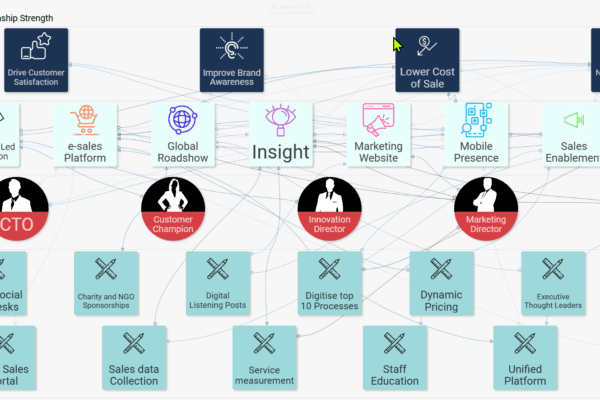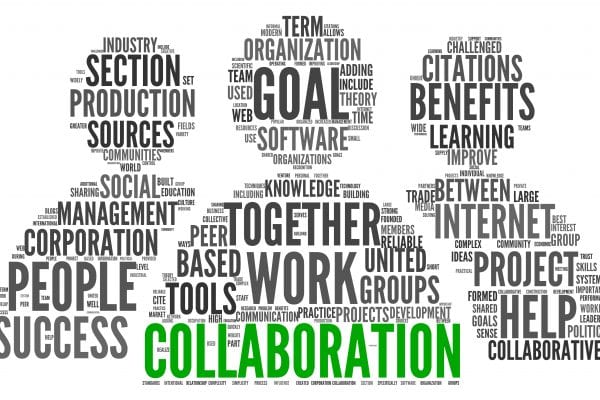Summary of ISO Stage 1 Awareness
Here is a summary of ISO 44001 Stage 1 Awareness to help you develop a clear mandate and strategy as to when and where you engage in a collaborative relationship.
Taking time to think carefully about how to proceed and establish a collaborative approach, can help you to focus on areas where collaborative business relationships will be of benefit.
You need to complete ISO 44001 Stage 1 Awareness to establish a basis for proceeding”, scratching your head and thinking about it with other people first is a good start.
The following 10 steps within ISO 44001 Stage 1 Awareness outline what you need to discover and realise, so you become more fully aware of what is required, to help you decide if embarking on a collaborative business relationship approach is right for you.
What does collaboration mean?
First you need to consider what collaboration means to you. Here is a simple definition that I use, which may help you.
“Collaboration is about people working together to deliver an agreed outcome that creates new value.”
Considering the above definition how does this relate to you developing collaborative business relationships within your organisation?
You need to discover how well you are doing this currently, where do you collaborate and where else could you apply collaboration, so you come to a consensus about what collaboration is and means for you.
It really is a go/no go decision point before spending time, resources and money so that you can answer a key question – “is it aligned with our business objectives and strategy?”
If the answer is no then you can stop and revisit at a later time. If the answer is yes, you need to become fully aware of what is required and realise the necessary investment, time and what resources are required.

ISO 44001 Awareness Stage 1 Steps
There are 10 steps to ISO 44001 (BS 11000) stage 1 Awareness:
- Senior executive – having someone with the responsibility and authority is key to the success of your collaboration initiative
- Policy – developing your policy helps your organisation to understand the scope of your collaboration management system and will need to address several areas such as type of collaboration, objectives, improvement, communication, measurement and management
- Objectives – this is taking your current business objectives and looking how collaborative business relationships and partnering externally could enhance them
- Value – identifying the potential benefits and how new value will be created will form an important part of your decision making process
- Business Relationship Niches – you need to identify and segment both your internal and external relationships so you can see the opportunities and plan accordingly
- Resources – people are key in any relationship and having the correct behaviours and competencies will have a big effect. You need to select the correct people and put appropriate development plans in place where necessary
- Risk – conducting an initial risk assessment will help you to plan and mitigate any potential issues from becoming risks as well as understanding the trade off between risk and benefit.
- Implementation plan – For each business relationship you need to capture and prioritise them against your objectives, value, resources and risk and establish an action plan for each relationship. You also need to include the first draft of an exit strategy – do you have one of these?
- Documentation — defined procedures need to be in place and here you can map to your existing documents and utilise them and complete a gap analysis to identify the other documents you need to produce.
- Relationship Management Plan (RMP) – finally initiating the RMP will act as your corporate template that either links to other business processes or is integrated into your existing business processes. Later on I have a very visual and collaborative RMP template for you
How to implement ISO 44001 Stage 1 Awareness
A good way to start is to complete a series of workshops and assessments that can help you to collate the information collaboratively and visualise it so you can make an informed decision about your collaboration approach and implementation plan.
This takes a Why, What and How approach as described in ISO 44001 collaborative business relationships, Part 2: Guide to implementing ISO 44002
If you would like to discuss more about Stage 1 or ISO 44001 in general request a Free Collaboration Consultation.
Select the “Complimentary ISO 44001 Collaboration Discovery Call” from the Event Type list below, choose a date and time, leave your details and click DONE.
You will get a confirmation email along with a link for the online MS Team meeting.
ISO 44001 Stage 2 Knowledge
Click on the link below to find out about the key steps you need to consider in Stage 2 – Knowledge



